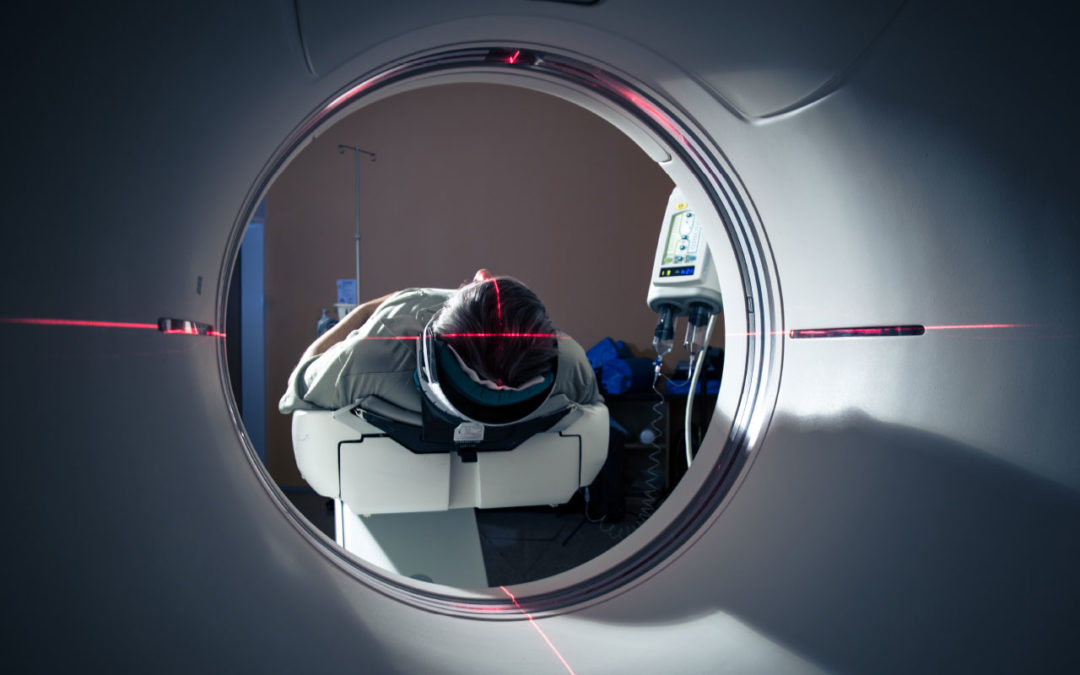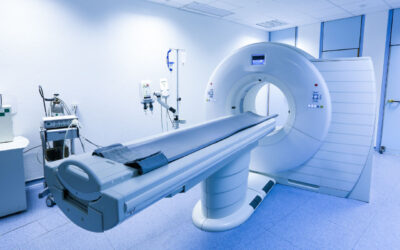
By Matt Skoufalos
When selecting a new piece of medical imaging equipment, the demands of cost, functionality, and lifetime upkeep and maintenance are all taken into consideration. Those health care workers who will interact with the technologies involved want devices with the most expansive, up-to-date feature sets. Those who must maintain the equipment want the ability to do so cost-effectively. And those responsible for budgeting want to bring the entire project in with maximum value per dollar spent over the useful life of the device.
Purchasing teams are challenged to balance these competing interests in such a way as to deliver what everyone wants. But as these devices become more complex to maintain and operate, is the likelihood of being able to support their upkeep in-house diminishing? And if they want to repair the equipment they purchase with onsite or third-party independent service provider (ISO) staff, can they do so safely and affordably?
Peter Weems, senior director of policy and strategy at the Washington, D.C.-based Medical Imaging & Technology Alliance (MITA), a trade group representing medical imaging original equipment manufacturers (OEMs), said that chief among OEM concerns is guaranteeing the safe and effective performance of their equipment. From their perspective, the best way to ensure that’s the case is by the U.S. Food and Drug Administration (FDA) regulating those organizations that service medical equipment. With an FDA-estimated 16,000 to 20,000 servicers in business today, and a complex variety of hybrid and tiered service agreements in play, “there is a lot of competition and choice out there,” Weems said.
“The medical device servicing industry is thriving,” he said. “There’s all sorts of different arrangements and models that manufacturers, servicers, and others are working to service devices: OEMs, ISOs, health care facilities, tiered partnerships, even OEMs servicing another manufacturer’s device.”
“From our perspective, there is no single, valid model,” Weems continued. “Manufacturers, ISOs, facilities; they’re out there entering into business relationships with each other. What we think would be best for patient safety, and the ongoing performance of medical devices, is for there to be a higher level of oversight and accountability in this industry. We have seen numerous instances of devices being improperly repaired by third-party servicers.”
Although OEMs are required to report to the FDA adverse patient effects from the improper functioning of their devices, ISOs aren’t bound by any such requirements, making it difficult to define the scope of the problem, Weems said. The lack of a specific data set identifying how frequently ISOs improperly repair OEM medical devices, is “a huge blind spot for industry, FDA, health care providers, and patients,” he said. Without a reporting process through which regulators can trace maintenance logs and the servicers performing the repairs, he argued that patients – and the expensive medical equipment that supports their care – are at risk.
“What we’re also talking about here is a wide range of things that could go wrong,” Weems said, from “catastrophic events” like electrical shock or device collapse, to improper calibration that yields subpar image capture, to cybersecurity risks, to simply sidelining a device, which results in delayed patient care.
“We’re not trying to put anybody out of business,” Weems said. “Servicers who have adopted the appropriate best practices and implemented a quality management system should be well-prepared to service medical devices.”
“What we’re trying to do is ensure that everybody who is engaged in that business has the proper oversight and accountability and is performing high-quality work,” he said. “There’s not a robust process for surveilling the quality and safety from the third-party industry, and this is a problem we’d like to see addressed.”
James Nestel, CEO of Americas and Asia Pacific operations at Simon Hegele Healthcare Solutions, a global supply chain and logistics services provider, said that the very broad variety of medical device servicing agreements among OEMs, ISOs and their customers is why greater transparency into the repair process is needed.
“I’ve seen the gauntlet of providers,” Nestel said. “I’ve been on the OEM inside, and now I’m on the OEM outside, supporting the OEMs. I’ve seen a wide variety of players out there, and I think that we at times see some players in the market get too risky with what they’re dealing with, and we need better guardrails along the way.”
Nestel argued that the complexity and variety of medical imaging devices in use at health care institutions across the country, compounded by the rapidly changing nature of the industry, requires standardized processes for their maintenance and repair, as well as for the training and continuing education of servicing personnel who perform that work.
“We’re working on a wide variety of equipment, all of them significantly different across modalities and manufacturers,” Nestel said. “I can’t put technicians in a classroom and train them in a week or two weeks or two months. There’s a lot of complexity to it and a tremendous cost to doing it.”
“Some of the technology is the same and doesn’t change, but the machines change, and if you’re not up-to-date with the technical support – people who know the equipment now and are on the equipment today – that’s when you see the problems. At my company, we have an ISO-certified training process, and that’s visible to my customers. If people don’t do that job regularly, they lose their qualifications.”
Like Weems, Nestel said his biggest concerns center on the qualifications of the service providers who repair and maintain those complex medical imaging devices as well as establishing a traceable process for charting their work. ISOs may say that they’re hamstrung by OEM proprietary processes whereby they are denied access to device technical manuals and service codes, but to Nestel, a sufficient training regimen takes weeks and months to develop in the classroom before a technician is field-ready.
“When I bring a new employee onboard, it takes a year and a half to get them trained up, and all that training’s done on the road,” he said. “That’s tens of thousands of dollars if I want to make them a lead, and every time I lose an employee, that’s an investment walking out the door. Anybody who says, ‘I just need the manual to be able to do it’ on this equipment is oversimplifying the process. The manuals are good; they’re there for a reason, but you can’t learn some of this stuff from reading a manual.”
For many health care providers in rural and low-income communities, however, the cost of contracting with OEM service teams may be financially prohibitive, or response may only be available on a longer timeline than a local ISO or in-house service team could offer. Plus, in some cases, OEMs may themselves contract with local ISOs for the last legs of their service contracts. Nestel said that many concerns about accessibility are being obviated with the advent of remote service consultations: OEM-certified technicians can dial in to the work site, providing a telepresence for diagnosing problems, guiding maintenance jobs or parts consultations.
“The ability to do video connections is great, and it’s there,” he said. “Those programs are growing and developing and thriving along the way. If you’ve got a person who has a general overview of the equipment, and a highly experienced person looking over their shoulder virtually, you can get a lot done until you have to get pieces and parts onsite, and most of the major players can have parts onsite within hours.”
“I foresee the OEMs building more partnerships with rural service providers so they can offer that support,” Nestel said.
Finding a way to “get over this us-versus-them stuff” is the fastest way to building the necessary bridges among ISOs, OEMs and customers who need their equipment serviced reliably and safely, said G. Wayne Moore, CEO of the Longmont, Colorado-based Acertara Acoustic Labs.
“You can buy a bucketful of hyperbole, but what problem are we trying to solve, and how do we solve the problem?” Moore said. “There’s a responsibility associated with right-to-repair, and everybody should take care to make sure that they’re doing the right thing. The simplicity evaporates beyond the simplicity of saying it versus doing it.”
Moore, who chairs the MITA Ultrasound and Service Committees, on which he represents the smallest of the organization’s member companies, said the market for medical imaging device sales, service and replacement parts is inherently mutualistic amid industry-wide institutional consolidation, hybrid service agreements, and a general desire to support the equipment that plays a critical function in patient care. The best way to get there, he argued, is by doing away with artificial divisions between OEMs and ISOs, and instead devising standards for equipment functionality and repair that best meets the needs of its customers.
“There are a lot of medical devices that lend themselves to fixing in-house; there are some that lend to challenges,” Moore said. “Would hospitals like lower service costs? Sure, but not at the expense of higher downtime or taking a greater risk of downtime. We do a lot of work for hospitals and OEMS, but they really don’t have a clear understanding of what technical capabilities they actually have in-house – how to measure them, what does it cost if it’s down for a while – and so looking at that opportunity cost is not taken with the degree of seriousness that it should be.
“We’re an ISO, so we’re all in for servicing the equipment, but how much does it cost me to build a third-party infrastructure that can support an MRI system and all the things I’m going to need to cover?” Moore said. “There are ISOs out there that are capable of doing great work, and I like to think we’re one of them. But the issue is knowing your limitations.”
Moore believes that knowledge in any specialty “has a shelf life,” and that although a general, fundamental understanding of how to service medical imaging equipment isn’t something that evaporates after years on the job, “what you’ve known in the past may not benefit you today.”
“ISOs need to maintain a quality management system like we do,” he said. “What’s the ongoing training, what do we have access to in terms of intellectual properties, and how do we design and develop our own test devices? We’re not beholden to the OEM for much, but that changes as you get higher up in the scale and complexity of the systems.”
For purchasers who aren’t sure they can afford the OEM service contract associated with a new piece of medical imaging equipment, or don’t want to perform all aspects of repair and maintenance through their own service teams, Moore reminds them that the power to create an agreement that best meets their needs remains in their hands until they sign on the dotted line.
“Biomeds, you have a lot of authority to get this stuff in the purchasing agreement,” he said, “and purchasing guys, buck up. If one company doesn’t have what you want, go deal with one who does. The power that the hospital has is extraordinary at the time of purchase. The question is, do they exercise it? It’s all open to them, they just lack the will, the energy, the time, to get that stuff written into the purchasing agreement.”
Much like medical equipment purchasing considerations are an interdepartmental effort in a health care setting, Rick Staab, CEO of the InterMed Group, an ISO out of Alachua, Florida, said that “everybody’s supposed to be at the table” when it comes time to define the parameters of safety, access, and affordability as relates to servicing those devices.”
Staab, who participates on the FDA steering committee for medical device servicing, said the best way to resolve industry concerns about the quality and efficacy of equipment maintenance is to create “a collaborative community” to guarantee that work is done within a quality management system (QMS) that’s bound by constant process improvement.
“Everybody has blemishes; it’s how you respond to them,” Staab said. “You bring a diverse opinion and datasets to the table, and you figure out what the best solution is. The patient should be the sun, and everything else revolves around them. It’s not ‘us against you.’ ”
Staab said that FDA explorations of ISO work histories (fda.gov/media/113431/download) haven’t revealed any evidence that third-party providers cause any additional risks to patient safety with their procedures; moreover, during the novel coronavirus (COVID-19) pandemic, when OEM support teams were depleted or unable to access the facilities that had contracted with them, it was their ISO partnerships that delivered onsite service in areas where it was critically needed. The effectiveness of those relationships underscores what’s possible when all interested parties work together for the benefit of the patient, Staab said.
“InterMed Group received calls to work for certain manufacturers,” he said. “They got rid of that rhetoric about ISOs not being able to service things right because they could not service their own equipment in the places that needed it right away. They gave us access codes and parts availability.”
Before any equipment purchase, Staab recommends that health care institutions perform a pre-purchase equipment evaluation and some degree of capital planning that involves calculating pricing, service, and ongoing costs to better educate themselves on how to plan for the useful life of their equipment.
“If you’re part of that pre-purchase evaluation, then you always negotiate for training on that device up-front because it’s the only leverage point you have,” Staab said. “It should be the same way for cybersecurity information, preventive maintenance, etc.”
Staab also argued that ISOs play an important role of extending the useful life of OEM medical imaging equipment by servicing it affordably, often in areas and for clients who are not the primary OEM customer focus anyway.
“Not everyone is actually going after the newest, most expensive technologies,” he said. “Rural areas want the same level of imaging; sometimes it doesn’t have the bells and whistles, but it gives you the same results. If they don’t have training or available parts, they’re not going to keep the older equipment going.”








